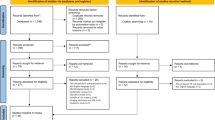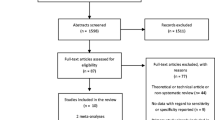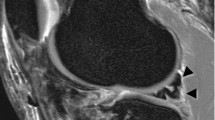Abstract
Purpose
To compare the magnetic resonance imaging (MRI) findings of patients undergoing knee arthroscopy for chondral lesions. The hypothesis was that MRI displays low sensitivity in the diagnosis and classification of chondral injuries.
Methods
A total of 83 knees were evaluated. The MRIs were performed using the same machine (GE SIGNA HDX 1.45 T). The MRI results were compared with the arthroscopy findings, and an agreement analysis was performed. Thirty-eight of the 83 MRI exams were evaluated by another radiologist for inter-observer agreement analysis. These analyses were performed using the kappa (κ) coefficient.
Results
The highest incidence of chondral injury was in the patella (14.4 %). The κ coefficient was 0.31 for the patellar surface; 0.38 for the trochlea; 0.46 for the medial femoral condyle; 0.51 for the lateral femoral condyle; and 0.19 for the lateral plateau. After dividing the injuries into two groups (ICRS Grades 0–II and Grades III and IV), the following κ coefficients were obtained as follows: 0.49 (patella); 0.53 (trochlea); 0.46 (medial femoral condyle); 0.43 (medial plateau); 0.67 (lateral femoral condyle); and 0.51 (lateral plateau). The MRI sensitivity was 76.4 % (patella), 88.2 % (trochlea), 69.7 % (medial femoral condyle), 85.7 % (medial plateau), 81.8 % (lateral femoral condyle) and 75 % (lateral plateau). Comparing the radiologists’ evaluations, the following κ coefficients were obtained as follows: 0.73 (patella); 0.63 (trochlea); 0.84 (medial femoral condyle); 0.72 (medial plateau); 0.77 (lateral femoral condyle); and 0.91 (lateral plateau).
Conclusion
Compared with arthroscopy, MRI displays moderate sensitivity for detecting and classifying chondral knee injuries. It is an important image method, but we must be careful in the assessment of patients with suspected chondral lesions.
Level of evidence
III.



Similar content being viewed by others
References
Alves Filho UPC, Leal LC, Fernandes AAC, Marques PO, Silva RR (2010) Concordância entre artroscopia e ressonância magnética para avaliação das lesões do joelho. Rev Baiana Saúde Pública 34:11–18
Arøen A, Løken S, Heir S, Alvik E, Ekeland A, Granlund OG, Engebretsen L (2004) Articular cartilage lesions in 993 consecutive knee arthroscopies. Am J Sports Med 32(1):211–215
Bredella MA, Tirman PF, Peterfy CG, Zarlingo M, Feller JF, Bost FW, Belzer JP, Wischer TK, Genant HK (1999) Accuracy of T2-weighted fast spin-echo MR imaging with fat saturation in detecting cartilage defects in the knee: comparison with arthroscopy in 130 patients. AJR Am J Roentgenol 172(4):1073–1080
Brittberg M, Winalski CS (2003) Evaluation of cartilage injuries and repair. J Bone Jt Surg Am 85-A(Suppl 2):58–69
Campbell AB, Knopp MV, Kolovich GP, Wei W, Jia G, Siston RA, Flanigan DC (2013) Preoperative MRI underestimates articular cartilage defect size compared with findings at arthroscopic knee surgery. Am J Sports Med 41(3):590–595
de Windt TS, Welsch GH, Brittberg M, Vonk LA, Marlovits S, Trattnig S, Saris DB (2013) Is magnetic resonance imaging reliable in predicting clinical outcome after articular cartilage repair of the knee? A systematic review and meta-analysis. Am J Sports Med 41(7):1695–1702
Figueroa D, Calvo R, Vaisman A, Carrasco MA, Moraga C, Delgado I (2007) Knee chondral lesions: incidence and correlation between arthroscopic and magnetic resonance findings. Arthroscopy 23(3):312–315
Galea A, Giuffre B, Dimmick S, Coolican MR, Parker DA (2009) The accuracy of magnetic resonance imaging scanning and its influence on management decisions in knee surgery. Arthroscopy 25(5):473–480
Harris JD, Brophy RH, Jia G, Price B, Knopp M, Siston RA, Flanigan DC (2012) Sensitivity of magnetic resonance imaging for detection of patellofemoral articular cartilage defects. Arthroscopy 28(11):1728–1737
Hartley KG, Damon BM, Patterson GT, Long JH, Holt GE (2012) MRI techniques: a review and update for the orthopaedic surgeon. J Am Acad Orthop Surg 20(12):775–787
Ho YY, Stanley AJ, Hui JH, Wang SC (2007) Postoperative evaluation of the knee after autologous chondrocyte implantation: what radiologists need to know. RadioGraphics 27(1):207–222
Jungius KP, Schmid MR, Zanetti M, Hodler J, Koch P, Pfirrmann CW (2006) Cartilaginous defects of the femorotibial joint: accuracy of coronal short inversion time inversion-recovery MR sequence. Radiology 240(2):482–488
Kaplan LD, Schurhoff MR, Selesnick H, Thorpe M, Uribe JW (2005) Magnetic resonance imaging of the knee in asymptomatic professional basketball players. Arthroscopy 21(5):557–561
Kijowski R, Blankenbaker DG, Davis KW, Shinki K, Kaplan LD, De Smet AA (2009) Comparison of 1.5- and 3.0-T MR imaging for evaluating the articular cartilage of the knee joint. Radiology 250(3):839–848
Kijowski R, Blankenbaker DG, Woods M, Del Rio AM, De Smet AA, Reeder SB (2011) Clinical usefulness of adding 3D cartilage imaging sequences to a routine knee MR protocol. AJR Am J Roentgenol 196(1):159–167
Kuikka PI, Kiuru MJ, Niva MH, Kröger H, Pihlajamäki HK (2006) Sensitivity of routine 1.0-Tesla magnetic resonance imaging versus arthroscopy as gold standard in fresh traumatic chondral lesions of the knee in young adults. Arthroscopy 22(10):1033–1039
Mattila VM, Weckström M, Leppänen V, Kiuru M, Pihlajamäki H (2012) Sensitivity of MRI for articular cartilage lesions of the patellae. Scand J Surg 101(1):56–61
Mori R, Ochi M, Sakai Y, Adachi N, Uchio Y (1999) Clinical significance of magnetic resonance imaging (MRI) for focal chondral lesions. Magn Reson Imaging 17(8):1135–1140
Munk B, Madsen F, Lundorf E, Staunstrup H, Schmidt SA, Bolvig L, Hellfritzsch MB, Jensen J (1998) Clinical magnetic resonance imaging and arthroscopic findings in knees: a comparative prospective study of meniscus anterior cruciate ligament and cartilage lesions. Arthroscopy 14(2):171–175
Nepple JJ, Wright RW, Matava MJ, Brophy RH (2012) Full-thickness knee articular cartilage defects in national football league combine athletes undergoing magnetic resonance imaging: prevalence, location, and association with previous surgery. Arthroscopy 28(6):798–806
Oakley SP, Portek I, Szomor Z, Appleyard RC, Ghosh P, Kirkham BW, Murrell GA, Lassere MN (2005) Arthroscopy—a potential “gold standard” for the diagnosis of the chondropathy of early osteoarthritis. Osteoarthr Cartil 13(5):368–378
Quatman CE, Hettrich CM, Schmitt LC, Spindler KP (2011) The clinical utility and diagnostic performance of magnetic resonance imaging for identification of early and advanced knee osteoarthritis: a systematic review. Am J Sports Med 39(7):1557–1568
Severino NR, Camargo OP, Aihara T, Cury RP, Oliveira VM, Vaz CE, Chameck A, Tomazini A, Silva JL (1997) Comparação entre a ressonância magnética e a artroscopia no diagnóstico das lesões do joelho. Rev Bras Ortop 32:275–278
Shelbourne KD, Jari S, Gray T (2005) Outcome of untreated traumatic articular cartilage defects of the knee. J Bone Jt Surg 85-A(Suppl 2):8–16
Sonin AH, Pensy RA, Mulligan ME, Hatem S (2002) Grading articular cartilage of the knee using fast spin-echo proton density-weighted MR imaging without fat suppression. AJR Am J Roentgenol 179(5):1159–1166
Vaz CE, Camargo OP, Santana PJ, Valezi AC (2005) Accuracy of magnetic resonance in identifying traumatic intraarticular knee lesions. Clinics 60(6):445–450
von Engelhardt LV, Kraft CN, Pennekamp PH, Schild HH, Schmitz A, von Falkenhausen M (2007) The evaluation of articular cartilage lesions of the knee with a 3-Tesla magnet. Arthroscopy 23(5):496–502
von Engelhardt LV, Raddatz M, Bouillon B, Spahn G, Dàvid A, Haage P, Lichtinger TK (2010) How reliable is MRI in diagnosing cartilaginous lesions in patients with first and recurrent lateral patellar dislocations? BMC Musculoskelet Disord 11:149
von Engelhardt LV, Lahner M, Klussmann A, Bouillon B, Dàvid A, Haage P, Lichtinger TK (2010) Arthroscopy vs. MRI for a detailed assessment of cartilage disease in osteoarthritis: diagnostic value of MRI in clinical practice. BMC Musculoskelet Disord 11:75
Yoshioka H, Stevens K, Hargreaves BA, Steines D, Genovese M, Dillingham MF, Winalski CS, Lang P (2004) Magnetic resonance imaging of articular cartilage of the knee: comparison between fat-suppressed three-dimensional SPGR imaging, fat-suppressed FSE imaging, and fat-suppressed three-dimensional DEFT imaging, and correlation with arthroscopy. J Magn Reson Imaging 20(5):857–864
Zhang M, Min Z, Rana N, Liu H (2013) Accuracy of magnetic resonance imaging in grading knee chondral defects. Arthroscopy 29(2):349–356
Acknowledgments
We appreciate the work of the Research Support Department of Botucatu Medical School—UNESP, which performed all the statistical analyses.
Ethical standard
The study was previously approved by the ethics research committee of the Irmandade Santa Casa de Londrina—BIOISCAL (Protocol Number: 38020114.7.0000.0099).
Author information
Authors and Affiliations
Corresponding author
Rights and permissions
About this article
Cite this article
Danieli, M.V., Guerreiro, J.P.F., Queiroz, A.d. et al. Diagnosis and classification of chondral knee injuries: comparison between magnetic resonance imaging and arthroscopy. Knee Surg Sports Traumatol Arthrosc 24, 1627–1633 (2016). https://doi.org/10.1007/s00167-015-3622-8
Received:
Accepted:
Published:
Issue Date:
DOI: https://doi.org/10.1007/s00167-015-3622-8




